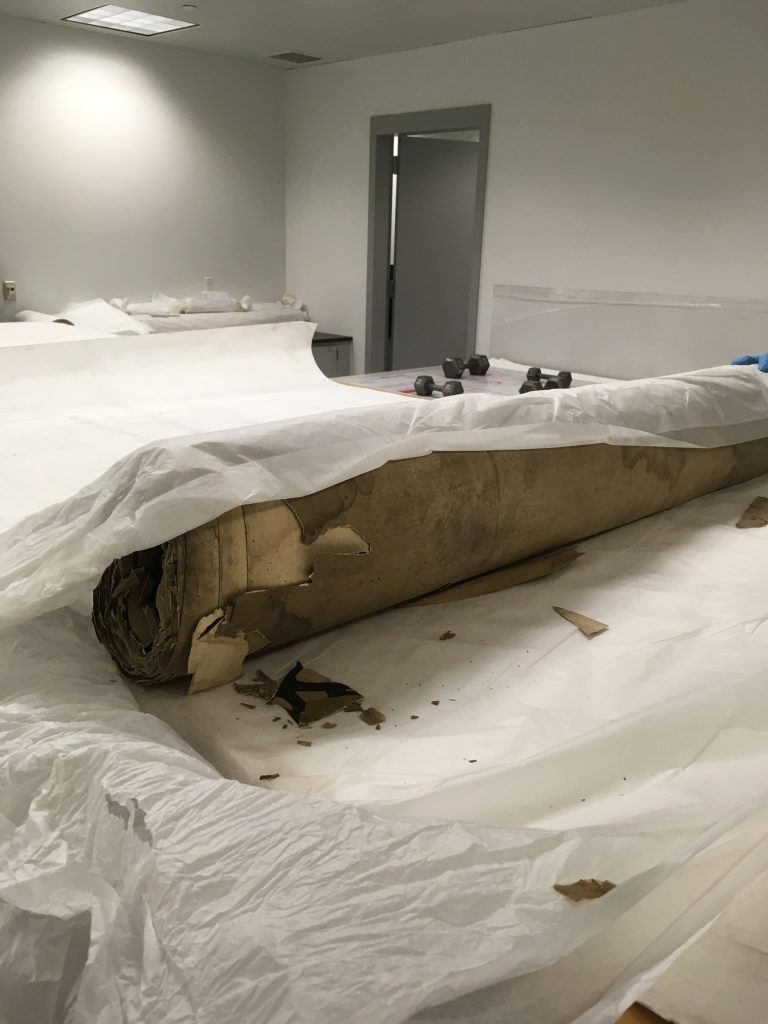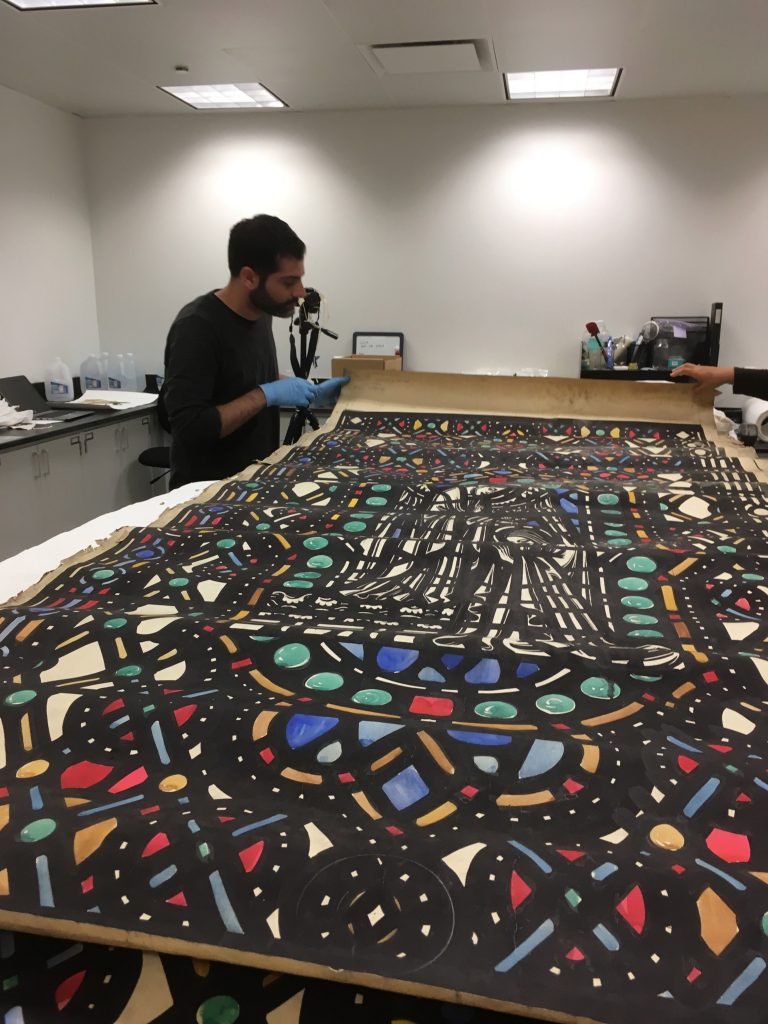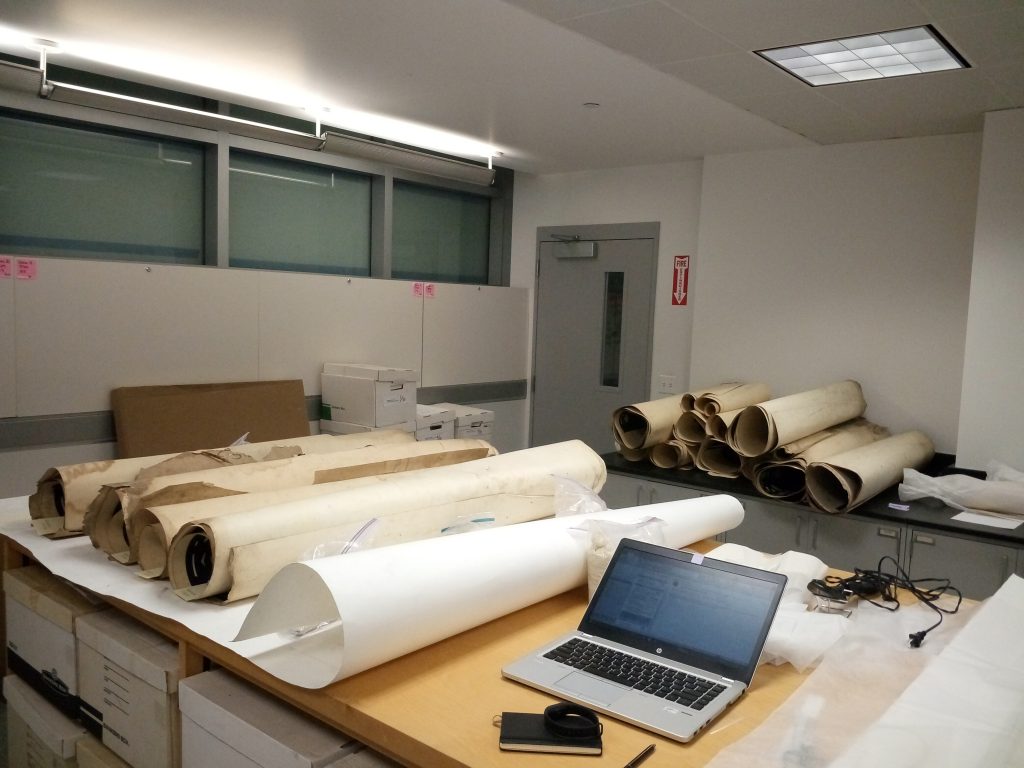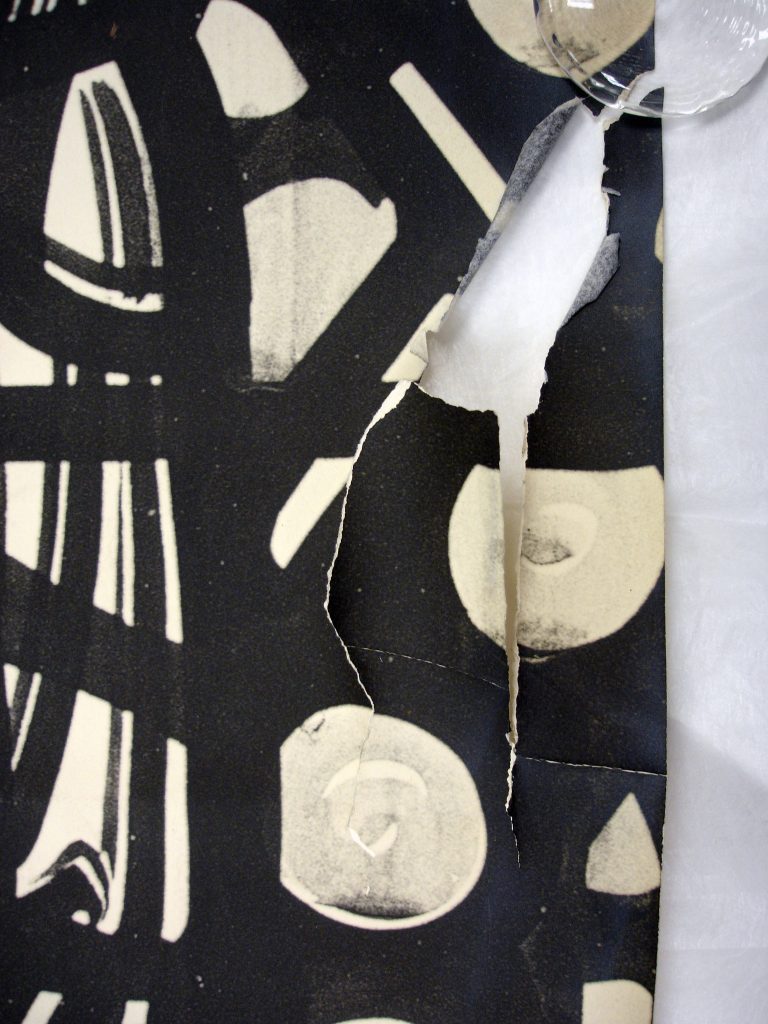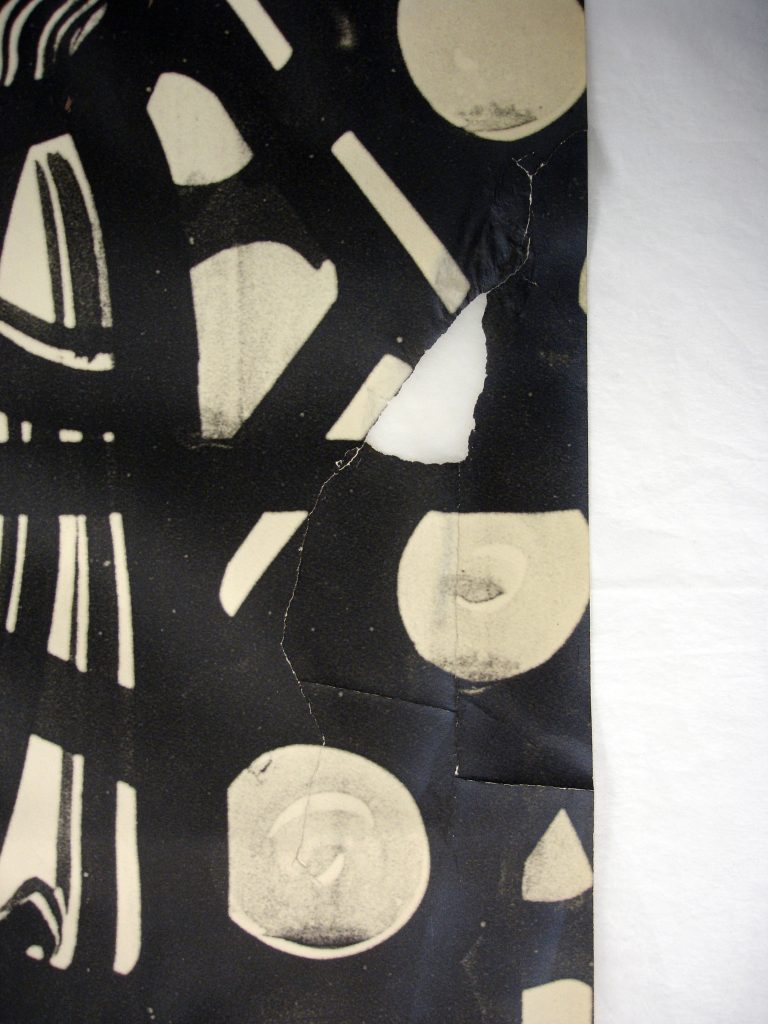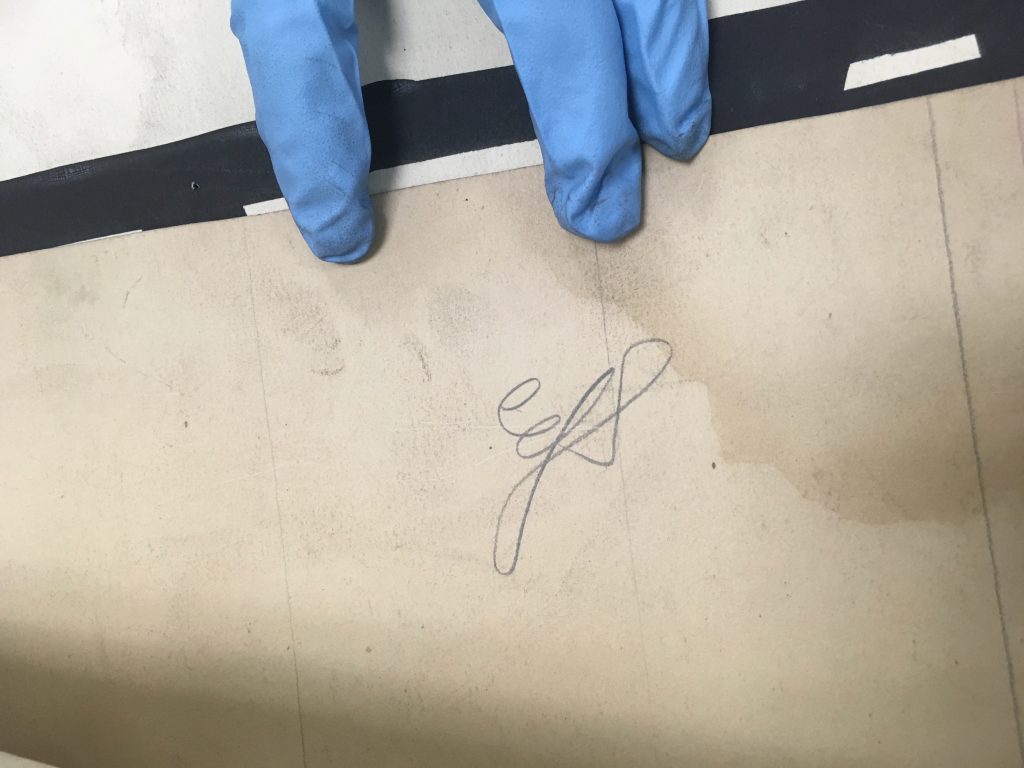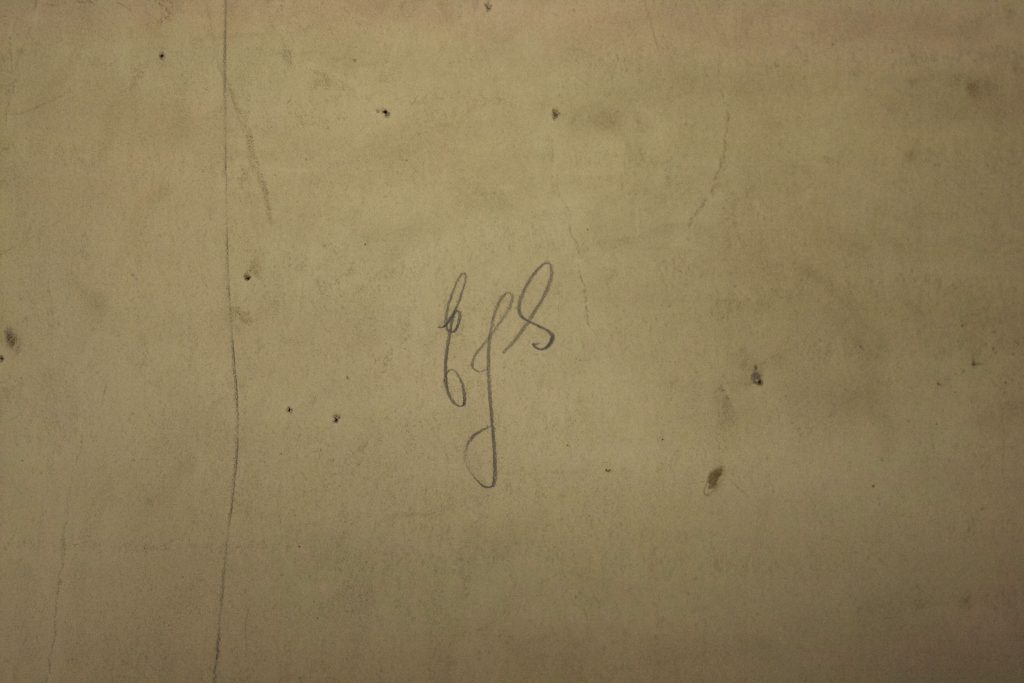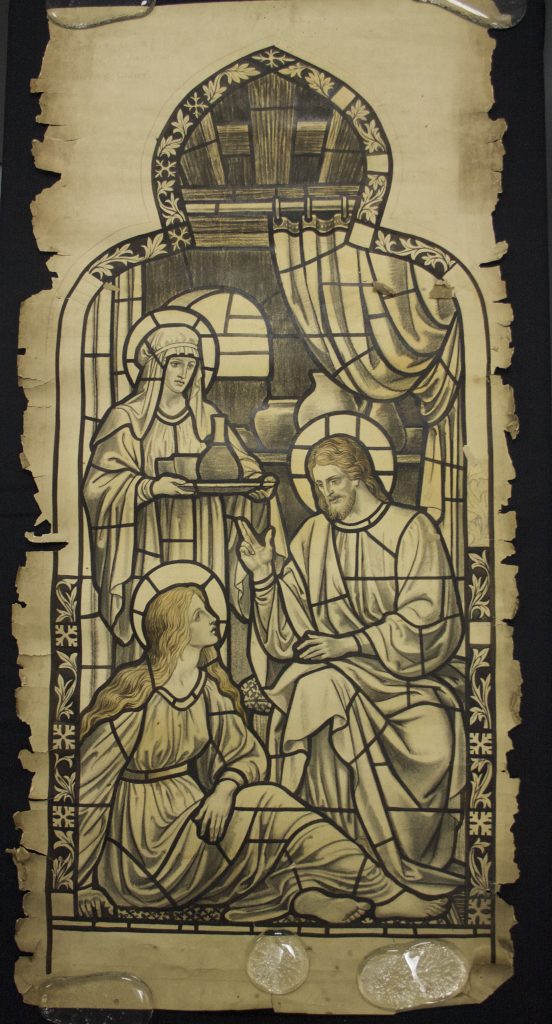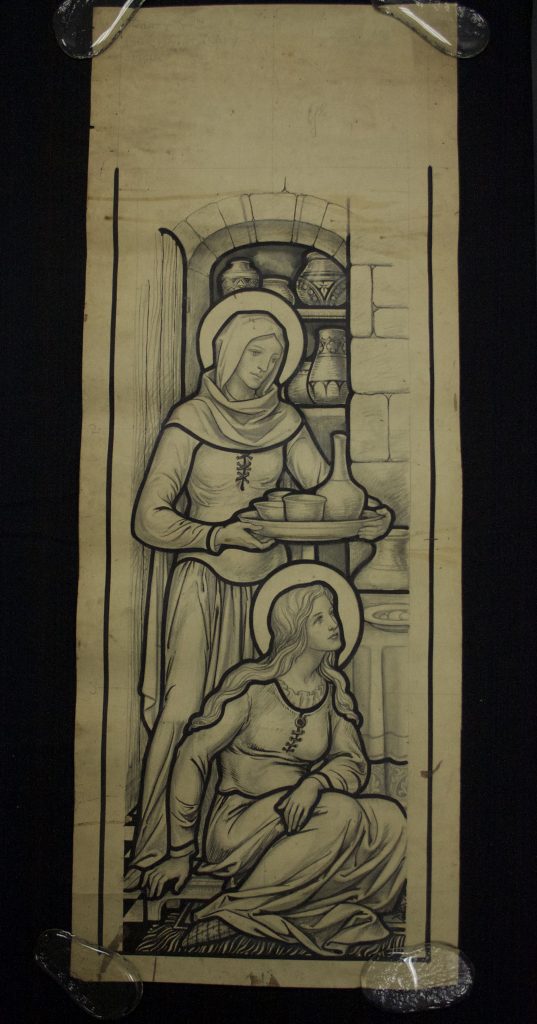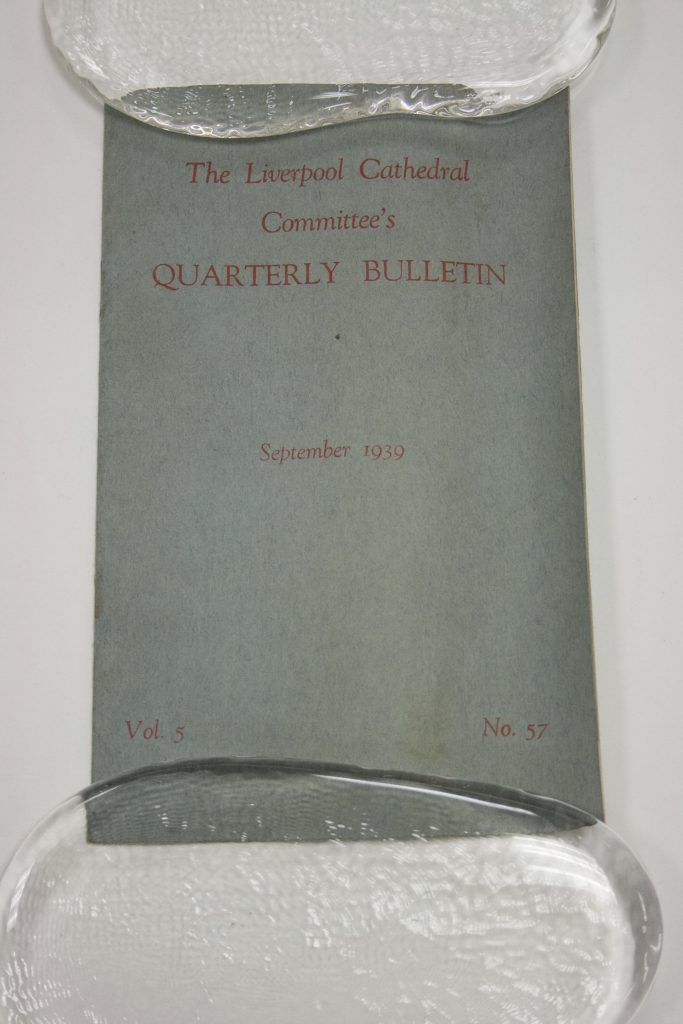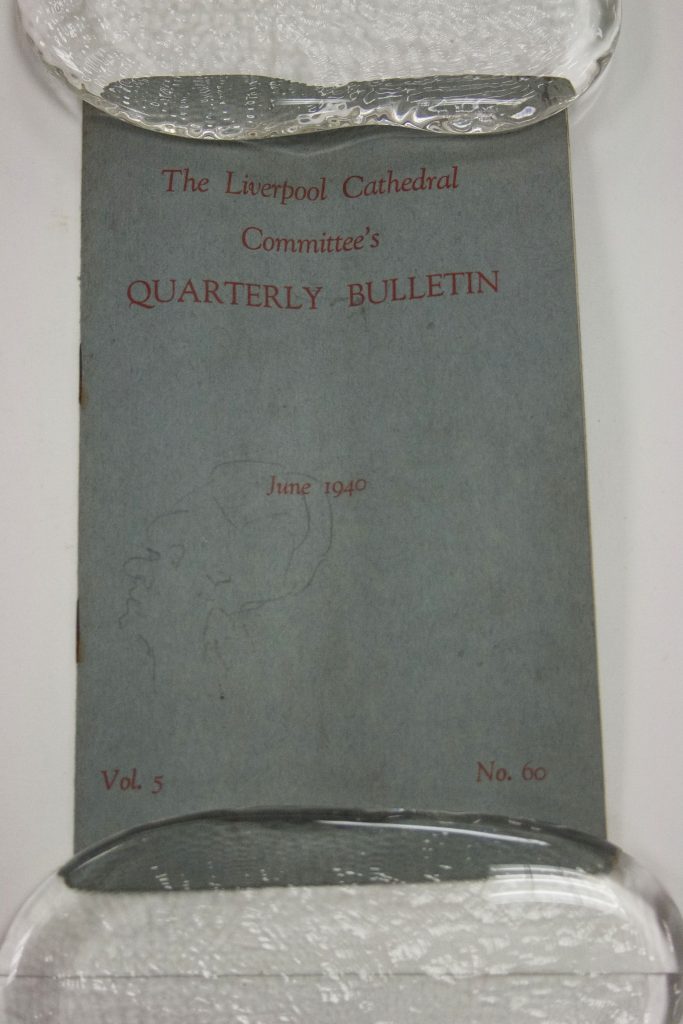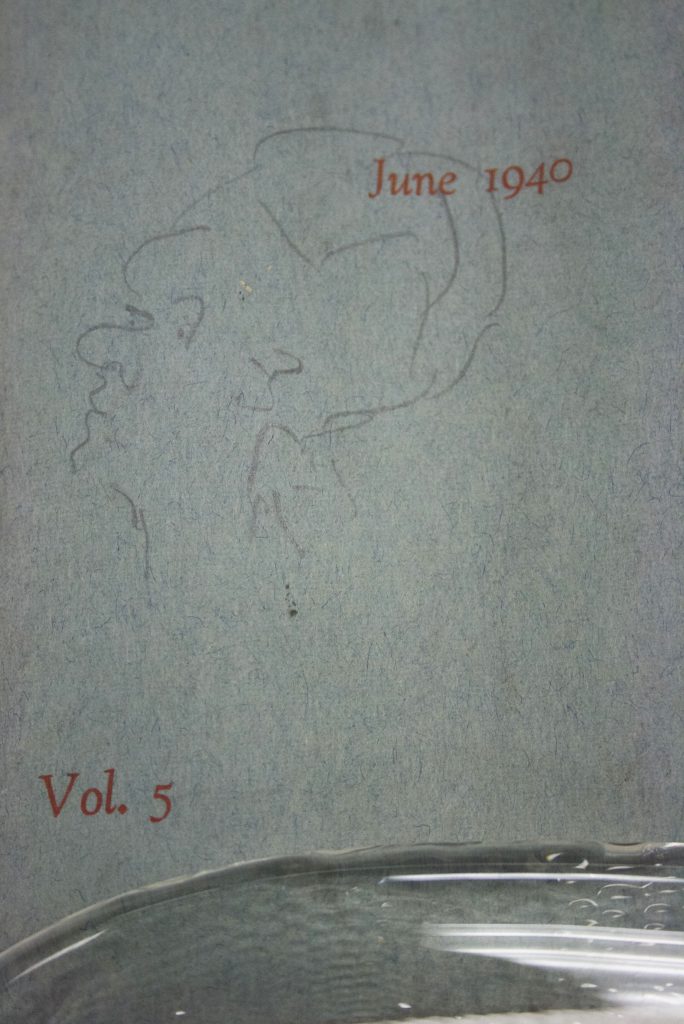This post comes from Colette Peavy and Pascual Ruiz Segura, Rakow Research Library interns working on the conservation of the Whitefriars stained glass cartoon collection over the summer of 2017, in conjunction with West Lake Conservators. Read more about this project and the collection in previous posts.
The Whitefriars stained glass cartoon collection was gifted to the Rakow Research Library from The Museum of London in 2008. We are the third pair of summer interns to work on this collection. The collection contains 1,800 rolls of cartoons (or working drawings) from churches in the United States and 30 other countries. The exact number of items in this collection is unknown; the number of items found in a roll can vary significantly.
This makes the conservation work uncertain, and this uncertainty requires improvisation and originality. Thus, with the opening of every roll, the conservation lab becomes a multipurpose space. The interrelation between treatments, size, and typology of the works in progress determines where they are going to be treated. This results in changing the appearance of the lab, and drives those who work there crazy, trying to assemble that puzzle. To make it even harder, these changes are quick to occur and only last until the current roll is finished! Each new roll sets the structure of the lab.
- A roll from Church of the Heavenly Rest in NYC, prior to unrolling
- Pascual Ruiz Segura unrolling one of the large color cartoons from Church of the Heavenly rest. This work is approximately 12 feet by 4 feet 6 inches, or 3.65 meters by 1.37 meters
- A small selection of the individual works found in a roll
On our first day, we got a quick tour of the Library’s special collections with Lori Fuller, Associate Librarian for Collections Management, and Moya Dumville, the paper conservator we are working with from West Lake Conservators. We had the chance to see a small portion of the Whitefriars collection. Later that day, we unrolled our first roll of cartoons. The roll was from Zion Lutheran Church in Stamford, Conn., and held 35 cartoons, a number we would not have guessed by looking at it. The majority of them were ink and watercolor drawings done on thick, machine-wove paper. We already had an idea of the types of works we might find in a roll. But there were still many unknowns: the size, the media, the preservation condition, and simply the number of items. For example, our first roll held cartoons done on thick, machine-wove paper, sketches done on tracing paper, two wax canvases, and a page of notes written on a piece of kraft paper. Our second roll, from Church of the Heavenly Rest in New York City, included eight silver gelatin photographs in addition to 17 large cartoons.
We were excited to work with the photographs because treating oversize photographs was new to both of us. Thankfully, photo conservator Luisa Casella from West Lake Conservators guided us through our first treatment.
- A close-up of a silver gelatin photograph prior to mending
- A close-up of the same photograph after mending
As we work, we continue to find things that fuel our curiosity. For example, in the process of examining each piece, we began to notice the initials “EFS” in the top corner of many of the cartoons. The initials appeared again on a roll labelled Binghamton Church.
- The initials EFS on a cartoon from Church of the Heavenly Rest
- The initials again, this time on a cartoon from Trinity Church in Binghamton, NY
The roll contained three drawings, from three different churches: Calvary Church in Summit, N.J.; Trinity Church in Binghamton, N.Y.; and Pennington Church (possible in N.J.). As you can see below, the drawings depict Martha, Mary, and Christ.
- Martha, drawn in ink and graphite, Pennington Church, NJ (?)
- Martha, Mary, and Christ, drawn in ink and graphite, Calvary Church, Summit, NJ
- Martha and Mary, drawn in ink and graphite, Trinity Church, Binghamton, NY
When we unrolled two rolls for Church of the Heavenly Rest, we found the initials again! This time, it was written on a greater number of the objects. In addition, we found two pamphlets, dated 1939-1940, from the Liverpool Cathedral in Liverpool, England. The pamphlets are entitled The Liverpool Cathedral Committee’s Quarterly Bulletin. One of them has a doodle on the cover. The discovery of these pamphlets was exciting, because items like this have not yet been found in the collection. Our curiosity led us to do more research on the history of the Cathedral, and we learned that it was bombed in September 1940, a mere three months after one of the pamphlets was published. The bombing resulted in the destruction of multiple stained glass windows. Fortunately, the Whitefriars collection contains multiple rolls from the Cathedral, so we will be able to do more research on the topic and perhaps find the original window designs.
- Liverpool Cathedral Pamphlet, 1939
- Liverpool Cathedral Pamphlet, 1940
- A close-up of the doodle on the cover of the 1940 pamphlet
Each roll contains new information about the working process, the artists, and the places Whitefriars stained glass may be found. We are looking forward to working with this collection, and sharing our discoveries along the way. Stay tuned for more blog posts, and make sure to check out our posts on social media.
Follow the progress of the 2017 project.
The Rakow Research Library is open to the public 9 am to 5 pm every day. We encourage everyone to explore our collections in person or online. If you have questions or need help with your research, please use our Ask a Glass Question service.

